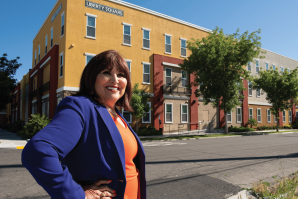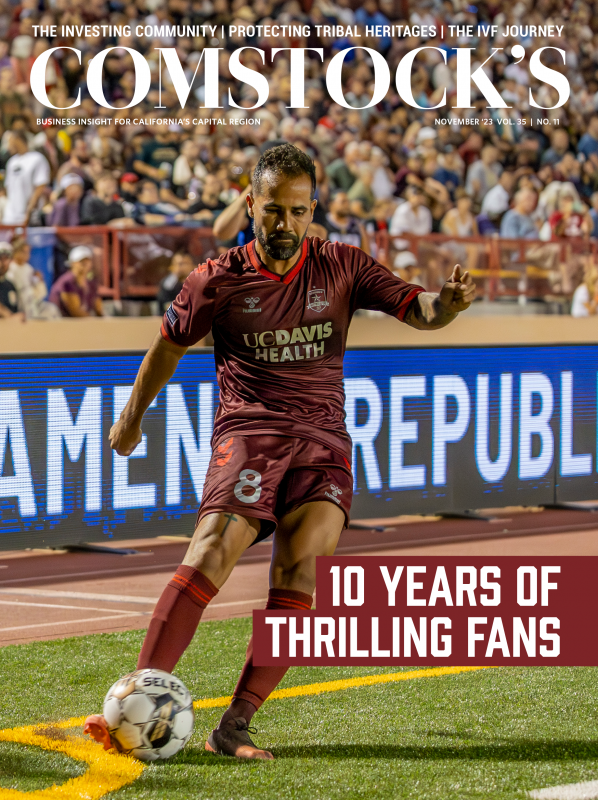We have all heard a lot in recent years about prison reform. The critics say that we were keeping too many people behind bars for too long. Others complain about the cost of maintaining jails and prisons, which in California far outstrips what we spend on roads and freeways. Responding to the call for reform, lawmakers made sentences shorter and created new standards to release inmates sooner. They even raised the minimum amount someone could steal before it was considered a major crime.
But after all of those so-called reforms, criminal behavior hasn’t changed much. If anything, some have become even more brazen — random gangs of thieves now storm retail stores in high profile “smash and grabs” that also endanger employees and customers. Basic products in stores that used to be openly displayed on shelves are now behind locked cases to prevent theft. Some stores have closed and fled certain neighborhoods in the Capital Region over this.
It seems to me that we aren’t gaining much benefit from these so-called reforms that, for the most part, excuse criminal behavior more than punish it.
We aren’t doing a good enough job to rehabilitate the criminals we do put behind bars. Many inmates return to a life of crime after they serve their sentences. State statistics show the recidivism rate at a dismal 44 percent. That means that almost half of all prison inmates released into our community fail to adjust to a normal life and return to custody within a year or two. It seems that the $15 billion taxpayers are spending each year on jails and prisons is a money-losing investment that no prudent business person would make.
It’s clear that more needs to be done inside prisons and jails to make people more prepared for the outside world. For many former inmates, the first few months of freedom — the so-called reentry period — is even tougher than doing time. Some may have no home or family waiting for them. Substance abuse or the same temptations in their old neighborhoods make it easy to fall back into the same bad habits with the same bad-influencing friends. Many don’t have the education or job skills to compete in the modern workplace.
The Los Rios Community College District is working to give inmates the help they need while they are still in custody. Through the district’s Prison and Reentry Education Program, teachers and counselors from all four junior college campuses go inside Folsom and Mule Creek state prisons, the Sacramento County Sheriff’s Rio Cosumnes Correctional Center and the Sacramento County Youth Detention Facility to work directly with inmates. They’ve been able to do this since 2016 — prior to that, they could only have correspondence.
The curriculum begins with helping inmates develop a more positive way of thinking about themselves and their behavior through counseling and help with substance abuse. It includes academic classes and job training to give former inmates a path toward supporting themselves financially.
Many studies show that this is the kind of reform that pays off — because it requires inmates to invest in themselves and work at reforming their lives. A recent RAND Corp. study contends that money spent on education and job training returns $4-5 for every dollar spent — an ROI that any prudent business person would appreciate.
About 1,000 people, from 18 to 80 years old, are currently enrolled in the Los Rios District program. Besides the wide range of ages, the group spans all races. But they have one thing in common — all of them had incomes below the poverty line before they committed the crime that led them to prison.
This program, and others like it, gives inmates an education and a new outlook to rise above that in the future. It’s clear from their academic record and newly minted degrees in subjects as wide-ranging as entrepreneurial business management, computer sciences and communications that these student inmates are determined to change the direction of their lives. Nearly 75 percent of them have successfully completed their classwork so far this year.
But the biggest value of this program and others is showing current and former inmates that people in the community — from teachers and counselors to pastors and mentors in the business world — care about their success. One student from the Los Rios program wrote: “I can’t predict the future, obviously, but thanks to this opportunity, I can say I see a future. Thank you.”
If in-prison rehabilitation programs produced more results like those at Los Rios, we all would be so much better off. We need to do more to punish criminal behavior and more to reward those who show the initiative to change and to continue their progress through internships and mentoring, even after their release.
If we did these things, we would have a healthier business climate, our communities would be safer, and our jails and prisons would have a reduced population. These are examples of the kinds of prison reform we need more of. What do you think?
Winnie Comstock-Carlson
President and Publisher
–
Stay up to date on business in the Capital Region: Subscribe to the Comstock’s newsletter today.
Recommended For You

The Wage of Innocence?
Comstock’s president and publisher reflects on minimum wage and the value of work.

Successful Entrepreneurs Are Innovative Risk-Takers
Comstock’s president and publisher considers the risks involved in becoming a successful small-business entrepreneur — such as starting a magazine with just $2.50 in your pocket.

Sacramento Rising: It’s Our Time
As Walt Kelly’s cartoon possum Pogo said on posters for the first Earth Day in 1970, “We have met the enemy and he is us.” Comstock’s president and publisher considers how the motto applies to California.

How to Win the ‘War for Talent’
Doesn’t anybody want to work anymore? It’s not just a rhetorical question. More than 50 percent of those surveyed by Pew Research said they believed they would get ahead in their careers by working harder. I was heartened to see that, because my personal mantra for success has always been that working harder is the first and best way to solve most problems.

Can a State Office Building Become a Home?
To help solve the housing crisis, the State of California has identified excess sites for conversion to affordable housing
In 2019, Gov. Gavin Newsom issued an executive order to identify excess state-owned property that could be converted into affordable housing. Few local examples exist, leaving architects and developers to wonder if they are financially feasible and what, if any, kinds of funding are available.





